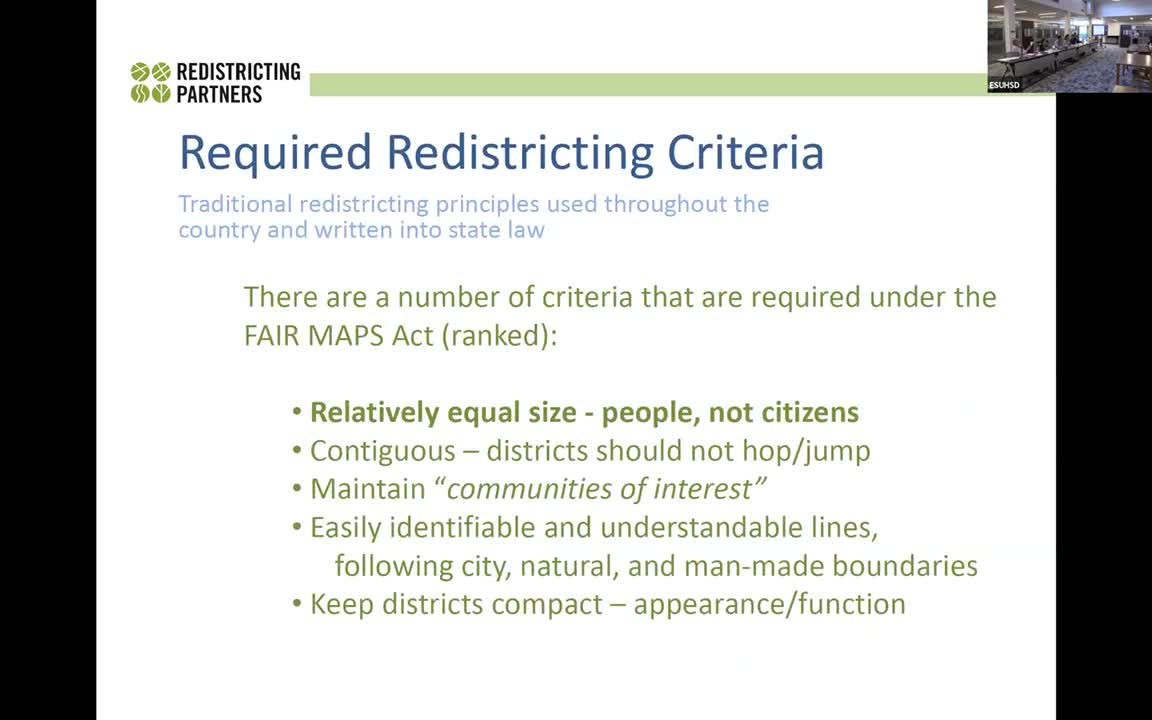Redistricting under Fair Maps Act prioritizes community interests and population balance
May 14, 2025 | East Side Union High, School Districts, California
Thanks to Scribe from Workplace AI and Family Portal , all articles about California are free for you to enjoy throughout 2025!

This article was created by AI using a video recording of the meeting. It summarizes the key points discussed, but for full details and context, please refer to the video of the full meeting. Link to Full Meeting
The meeting highlighted the importance of maintaining relatively equal populations across districts, with a permissible deviation of up to 10% from the ideal size based on U.S. Census data. This ensures that each district represents a similar number of constituents, promoting equitable representation.

Before you scroll further...
Get access to the words and decisions of your elected officials for free!
Subscribe for FreeAnother key aspect discussed was the requirement for districts to be contiguous. This means that districts must be whole and unbroken, allowing for ease of travel within the district. The board emphasized two types of contiguity: literal, where all parts of the district are physically connected, and functional, which allows for practical movement without crossing district lines.
The concept of "communities of interest" was also a focal point of the discussion. These are groups of individuals who share common concerns or interests and would benefit from being grouped together in a district. The board noted that keeping these communities intact can enhance their ability to advocate for their needs, particularly in relation to school district issues. Examples of communities of interest include various ethnic groups, which can better organize and represent their interests when not divided across multiple districts.
Additionally, the board addressed the importance of compactness in district design, aiming to avoid irregular shapes that could suggest gerrymandering. The goal is to create districts that are easy to understand and navigate, using natural or man-made boundaries to define lines clearly.
The meeting concluded with a reminder that under the Fair Maps Act, considerations such as incumbents or political party advantages are prohibited in the redistricting process. This ensures that the mapping is conducted fairly and without bias, focusing solely on community representation.
As the ESUHSD moves forward with its districting efforts, these discussions underscore the district's commitment to transparency and community involvement in shaping the educational landscape. The next steps will involve gathering public input and refining the proposed maps to align with these established criteria.
Converted from ESUHSD Special Board Meeting 5/12/25 meeting on May 14, 2025
Link to Full Meeting
Comments
View full meeting
This article is based on a recent meeting—watch the full video and explore the complete transcript for deeper insights into the discussion.
View full meeting




